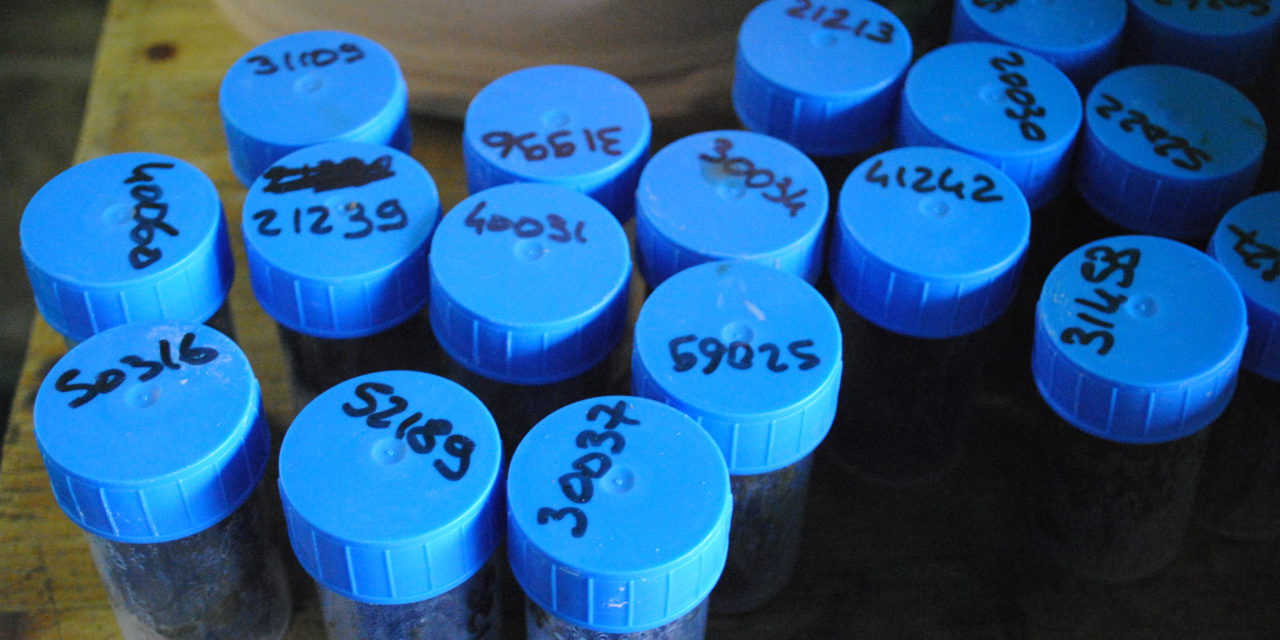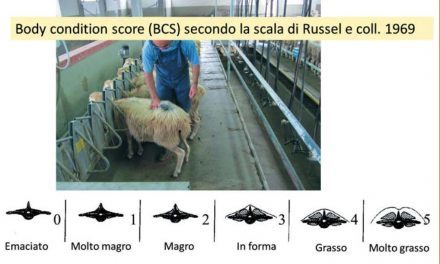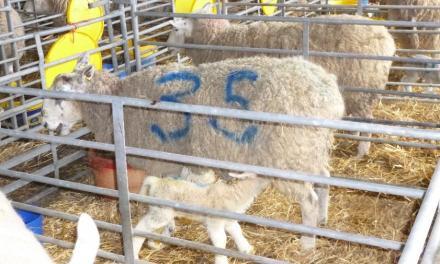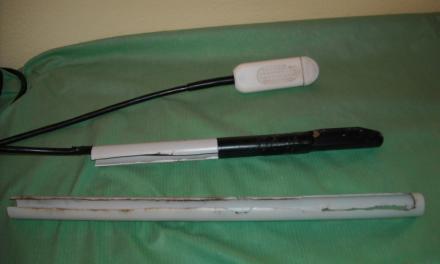This post is also available in:
![]()
![]()
![]()
![]()
![]()
![]()
Nematode Resistance
Factsheet name: Genetics of gastrointestinal nematodes resistance
Introduction:
Gastrointestinal nematodes are one of the major health problems in grazing animals. Gastrointestinal nematode infections result in important yield reductions and higher production costs, due to veterinary treatments, and higher culling rates. Moreover, chemical treatments involve the risk of drug residues in the food and environment and the development of anthelmintic resistance, which has been reported in several countries.
In sheep, gastrointestinal nematode control strategies may include management practices such as soil tillage or rotational grazing that aim at reducing pasture contamination. Alternative approaches to limit gastrointestinal nematodes infection rely on nutritional schemes based on either grazing crops with anthelmintic proprieties, such as chicory (Cichorium intybus), sulla (Hedysarum coronarium), sainfoin (Onobrychus viciifolia) and sericea lespedeza (Lespedeza cuneata), or supplementation with tannins and/or proteins; but even these approaches are difficult to apply, especially in extensive or semi-extensive systems.
Thus, it would be of particular interest to use genetic selection as a complementary control strategy to anthelmintics in order to limit their use. Reducing the number of treatment cycles would decrease the selection pressure on gastrointestinal nematodes populations and thus limit the development of anthelmintic resistance. It would also limit the negative impact of these molecules on the fauna of the soil and help to reduce the number of treatments carried out by breeders.
Topic: health
Production: Dairy / Meat
Animal Category: Adult / Lamb / Replacement
Description
|
State of the art |
Selective breeding of animals with enhanced resistance to gastrointestinal nematodes has been suggested for the sustainable control of parasite infections in sheep since genetic variation between individuals and breeds has been documented. Indeed, estimates of the heritability of proxy traits for gastrointestinal nematode resistance in sheep range from 0.01 to 0.65, but it is generally moderate. Resistance to different species of nematodes tend to be interrelated, with genetic correlations arising from different species or genera of parasites generally being close to 0.50 or higher in some cases.
Unfavourable but low genetic correlations between milk production traits and resistance to parasite have been observed in dairy sheep. Others studies have reported genetic correlations ranging from −0.17 to 0.21 between faecal egg counts (FEC) and wool production traits and from −0.63 to 0.24 between FEC and meat production traits in sheep.
Thus, breeding for resistance to gastrointestinal nematodes can be considered in sheep but implies structured selection schemes and accurate recording of both performance and pedigree information, which are essential for genetic evaluations.
Traditionally, genetic improvement of a population/breed requires a selection program i.e a collective organization of farmers for:
- performance recording;
- pedigree recording;
- exchange of breeding animals by natural mating and/or artificial insemination.
The proportion of farmers directly involved in pedigree and performance recording (breeders) should be as large as possible representing at least 10-20% of the whole population submitted to selection.
The remaining farmers (commercial farmers) can exploit the genetic improvement generated by breeders by using animals with predicted performance information (mainly males) coming from breeders.

Figure 1 – Pyramidal management of the population (Source: Barillet F., 2001)
Cost/benefits analysis of the selection scheme should be carefully performed in order to assure the profitability of this organisation i.e long term incomes must be higher than costs at population level.
| Selection criterion |
Fecal egg count (FEC), i.e. the number of parasite eggs per gram of faeces, has been largely used as a proxy trait to measure individual resistance to gastrointestinal nematodes in natural grazing conditions.
However, the inclusion of gastrointestinal nematodes resistance in traditional breeding schemes as described above is hampered by the difficulty to record FEC on a large scale since its measure is too laborious and costly in field conditions.
| Recording protocols |
In natural condition of infestation, frequency and amounts of yearly samplings have to be assessed according to the climate conditions and breeds. In any case, in order to have data useful for the genetic evaluation, a representative sample of sheep in the flock involved in the selection scheme has to be periodically monitored to decide whether to sample the whole flock, i.e. when the number of infected animals and the level of infestation are considered sufficient to appreciate individual variability, individual FEC can be measured on the whole flock.
| Pedigree recording |
Pedigree recording can be traditionally performed by single sire natural mating and/or artificial insemination. Both practices are laborious and costly and may discourage farmers to participate to the selection programs.
EID is a promising tool to allow an early identification of mother/lamb couples and pedigree recording. It is important to follow the evolution of costs for a parental assignment based on DNA analysis, as this will allow flocks that use multiple sire mating to also collect pedigree information.
| Other factors affecting the breeding objective |
The seasonality and the grazing system strongly affect the level of infestation.
Further data related to environmental factors affecting the level of infestation should be recorded to be included in the genetic model for estimating the breeding values:
- Farm management mainly grazing system.
- Age
- Parity
- Lambing date
- Sampling date
- Frequency, date and molecule of anthelmintic administration
| Genetic evaluation |
All recorded data must be used to produce estimated breeding values for each animal.
It is crucial for the breeder’s organization to plan the availability of scientists able to manage large datasets and modern methodologies (BLUP) for the genetic evaluation.
| Alternative approach |
As mentioned above FEC measurements on sheep in commercial flocks are extremely costly and laborious. It has been shown that sheep that are selected on the basis of their response to artificial challenges respond similarly when exposed to natural infection, and a high positive genetic correlation was estimated between FEC recorded under artificial or natural infection. Moreover, it has been shown that selection of rams for parasite resistance after artificial challenges allows to improve the resistance of their female offspring for parasite infections in natural conditions.
Thus an alternative approach may be to select rams gathered for AI progeny-testing or performance-testing by artificially infecting them with standardized doses of larvae.
| Genomic selection |
In sheep, mutations in genes that result in significant increases in resistance for gastrointestinal nematodes have not been detected until now. Thus, selection based on DNA specific causative mutations/LDmarkers is not conceivable in the short term.
Over the past decade, genomic selection has become the reference approach for the genetic improvement of livestock due to decreasing costs of medium density DNA arrays which can be used, instead of the traditional pedigree matrix, to describe the realized relationships between individuals.
However, as in the traditional dairy cattle approach, genomic breeding values of selection candidates can be calculated only for traits that have been recorded on a large number of genotyped animals or their progeny for decades.
Thus, the applications of genomic selection for gastrointestinal nematodes resistance may be conceived taking advantage of female nuclei which serve as reference populations to estimate breeding values of young rams that will be used in the commercial farms i.e. using the genotypes and phenotypes of the nucleus flock combined with the genotyping of selection candidate males that are bred in commercial farms and are genetically connected with the experimental flock.







